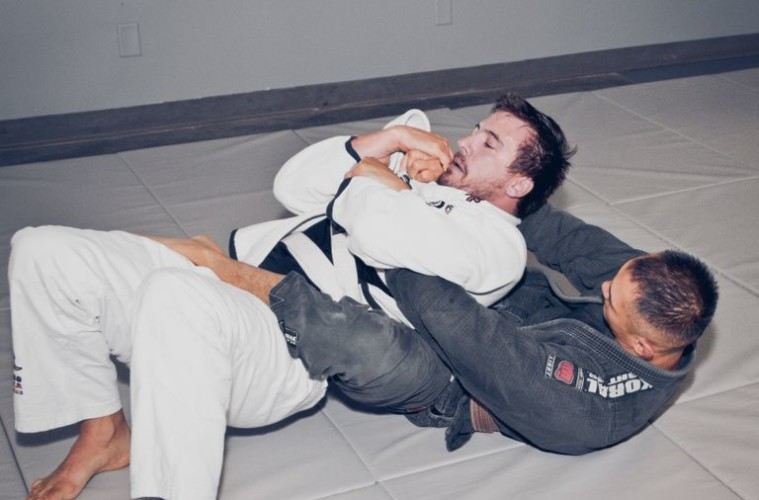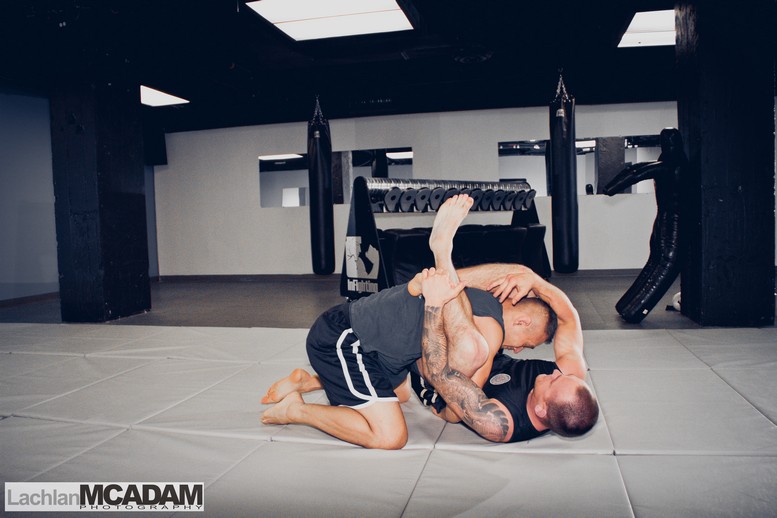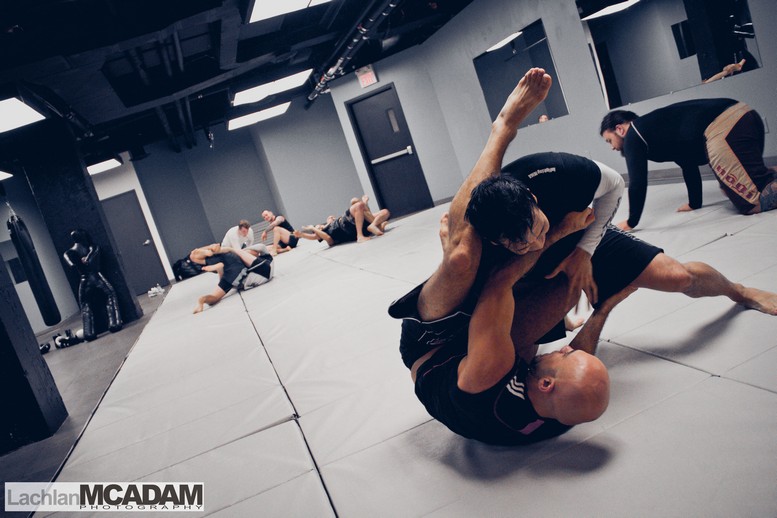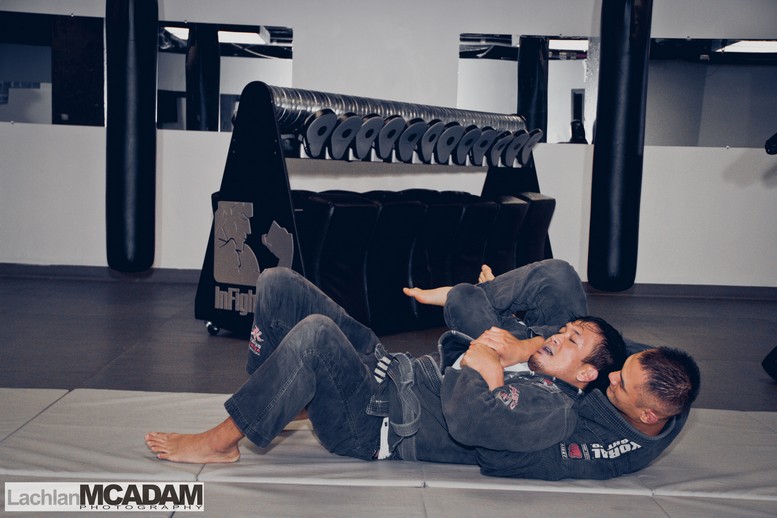
BJJ is extremely complex and excessively confusing.
When new students walk into my Downtown Vancouver BJJ school, I do my very best to simplify BJJ for them so that they are able to comprehend the art immediately.
As a means to mitigate confusion and complexity for newbies, I use what’s called the BJJ Dialogue.

The BJJ Dialogue is an “If/Then” path of thinking to help new students understand what they need to do when you’re rolling or sparring Jiu Jitsu.
There are several ways to simplify Jiu Jitsu so that new students understand the ground game immediately but I believe that the BJJ Dialogue is one of the strongest ways to forge comprehension of BJJ almost immediately.
If you’ve never steeped foot into a Brazilian Jiu Jitsu school before or if you have less than one year of training BJJ, the BJJ Dialogue will seem like revelation.
The BJJ Dialogue is basically a conversation that starts with the question: “What position am I in?”
The next questions is: “Is the position good or bad?”
If you’re in a good position:
1) Maintain the position
2) And then, Attack
If you’re in a bad position:
1) Defend and stay safe
2) And then, Escape
And that’s it! Follow this formula and you’ll be doing Jiu Jitsu. You’ll be able to roll with higher level practitioners and feel like you know what you need to do.
The BJJ Dialogue is a guideline for functionally executing Jiu Jitsu and being able to discern the complexity of Jiu Jitsu by breaking it down to its core set of positions and procedures.
The BJJ Dialogue will also help newbies to apply the correct sequence of moves.
Newbies typically apply the sequence of techniques wrong.
For example, when novices find themselves in Bottom Mount, they’ll immediately try to escape. By attempting to escape Bottom Mount right away without first protecting their neck or their arms they open themselves up for Armbars and Chokes.
The proper sequencing is critical: If you’re in a bad position, defend first and then attempt to escape.
Let’s take another example to help us understand the BJJ Dialogue.
Here’s a common mistake made by newbies: I’m in Bottom Mount and it’s a bad position; thus, I’m going to attack with a choke and maintain this position.
If you’ve been doing Jiu Jitsu for a while, you’ll see that attacking from Bottom Mount is clearly wrong; but, we’ve all made these kinds of mistakes before.
We’ve all attacked from bad positions. It’s a mistake that everyone makes when they start Jiu Jitsu.
The BJJ Dialogue is a guideline to help students understand the sport side of BJJ. Largely, for this article we are omitting influences from MMA or Street Self Defense.
Of course, considerations for MMA and Street Self Defense are extremely important; but, to maintain the simplicity of the BJJ Dialogue, we only want to look at the sport side of BJJ for this article.
The reason why I bring up this point is to address the purpose of Guard Passing.
Being inside someone’s Guard can be confusing if you’re just starting Jiu Jitsu.

If you’re on top and in someone’s Guard, is this position good or bad?
For MMA, being on top and inside someone’s Guard is pretty good. You can strike and work Ground n’ Pound. The same goes with street Self Defense.
In terms of BJJ, being in someone’s Guard is a bad thing.
Yes, you can stay in their Guard and you have a handful of submissions like ankle locks and kneebars and if you’re in Half Guard, you have some chokes you can hit; but, in general, you are in a bad position.
The person on bottom who is fighting from their Guard has submissions and sweeps and can take your back.
When you are rolling and you are sparring BJJ and if you are in someone’s Guard; then, you are in a bad position; thus, you need to stay safe by maintaining strong posture and by grip fighting and then escape by passing their Guard.
A rookie mistake is to apply a lapel choke when you’re on top and inside someone’s Guard. Attacking from inside the Guard may seem intuitive for a total newbie because you’re on top and it appears like you’ve got Mount; and thus, in a good position.
Understand that the BJJ Dialogue is a guideline primarily designed for White Belts.

With Blue Belts and more advanced students, it is possible to attack immediately without stabilizing first and you can escape without staying safe first and try to escape out of the scramble.
The BJJ Dialogue is a simple method to help new students with a logical step by step process when they’re rolling.
The conversation that should be going through your head as you do Jiu Jitsu ought to sound like this:
What Position am I in?
Is the Position good or bad?
If it’s Good- maintain the position; and then, attack.
If it’s Bad- defend; and then escape.
When you’re just starting off Jiu Jitsu, deciding what to do and when to do is tough. The BJJ Dialogue is simply a roadmap to practicing Jiu Jitsu correctly. After some time, the BJJ Dialogue will become intuitive and your responses will become habitual and your decision making will quicken and the BJJ Dialogue will become subconscious.
That’s all for now, I’m off to teach class!



